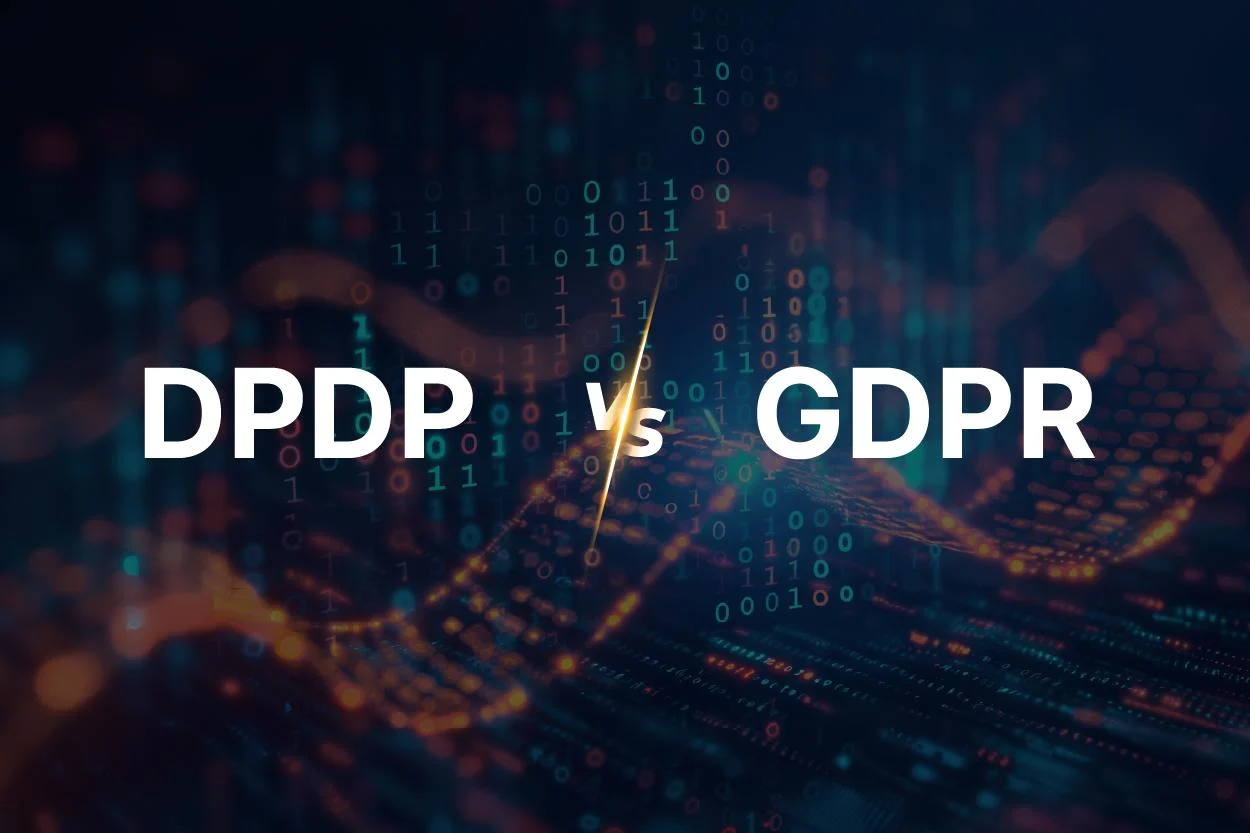As India moves toward full enforcement of the Digital Personal Data Protection Act, conversations around dpdp vs gdpr have intensified. Many founders, compliance teams and product leaders want to understand how India’s new privacy law compares to the European framework that reshaped global data protection. A clear gdpr comparison also helps businesses understand what practical steps they must take to stay compliant in the evolving data privacy law India landscape.
While both laws aim to protect personal information and strengthen user rights, the DPDP Act is built with India’s digital ecosystem in mind. This creates important similarities but also some meaningful differences.
Below is a clear, structured comparison that outlines what Indian companies must prepare for.
Similarities between DPDP and GDPR
There are several areas where the DPDP Act and GDPR align, especially in principles and user rights.
1. Strong focus on consent
Both DPDP and GDPR prioritise meaningful, informed consent. Platforms must explain data practices clearly and allow users to withdraw consent easily.
2. Rights for individuals
Users under both laws have the right to access, correct and erase their data. They can also ask companies to stop processing their information.
3. Obligations for data handling
Both frameworks require companies to adopt privacy by design principles, maintain records of processing, and secure personal data through organisational and technical measures.
4. Coverage across digital services
Any digital service that collects personal data must comply with the relevant regulations, whether it is an app, portal or cloud based platform.
Key differences between DPDP and GDPR
This is where dpdp vs gdpr becomes important. The two laws share intent, but implementation varies significantly.
1. India uses a simplified structure
The DPDP Act removes complex classifications such as sensitive data categories that appear in GDPR. Instead, the DPDP Act focuses on what data is being collected and whether valid consent exists.
2. Lower administrative burden
Unlike GDPR, the Indian law does not require privacy impact assessments, data protection officers for every organisation or mandatory data audits for all businesses. These requirements apply only where necessary.
3. Significant role for the government
The DPDP Act allows the government to notify exemptions for certain institutions and to issue rules for specific sectors. GDPR does not offer this kind of broad exemption structure.
4. Children’s data receives special attention
While GDPR protects minors, the DPDP Act sets a very firm approach to parental consent, age assurance and restrictions on profiling children. This makes child data a priority area for Indian compliance teams.
5. Cross border transfers work differently
GDPR permits transfers to countries with adequate protection or under contractual safeguards. The DPDP Act uses a different model where the government may approve specific countries for data transfers.
What Indian businesses must do now
A clear gdpr comparison helps, but Indian companies must act based on the DPDP Act’s specific expectations. Here is a straightforward checklist for businesses preparing for the data privacy law India is rolling out.
1. Build consent journeys that are fully compliant
Consent must be informed, granular, easy to withdraw and clearly recorded. Businesses should evaluate whether their current consent flows meet these standards.
2. Maintain accurate records of processing
Enterprises must document what data is collected, why it is collected and how long it is retained. Clear records also simplify future audits.
3. Strengthen data security
The DPDP Act expects reasonable safeguards. Companies must improve access controls, encryption, monitoring and overall data governance.
4. Prepare for user requests
Teams should be able to respond quickly to requests for access, correction or deletion. These processes must be simple and trackable.
5. Review data sharing with partners
Any partner handling user data must comply with the DPDP Act. Companies should update contracts and evaluate how data moves between systems.
6. Build readiness for child data
If any product interacts with minors, teams must implement strong age assurance and parental consent flows. This is a major focus area under the DPDP Act.
What this means for privacy readiness in India
Both GDPR and the DPDP Act share a single goal: to give users more control and to make businesses accountable. However, the data privacy law India has introduced is tailored to India’s digital scale and government expectations. Indian companies should not assume that GDPR style compliance is enough. The DPDP Act requires its own consent framework, its own governance model and its own record keeping structure.
The organisations that prepare early will find that strong privacy practices are not just a legal requirement but a competitive advantage in a market where trust matters more than ever
